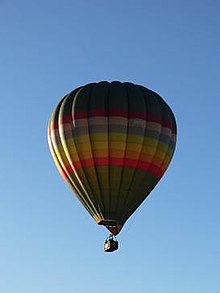
A hot air balloon is a lighter-than-air aircraft consisting of a bag, called an envelope, which contains heated air. Suspended beneath is a gondola or wicker basket, which carries passengers and a source of heat, in most cases an open flame caused by burning liquid propane. The heated air inside the envelope makes it buoyant, since it has a lower density than the colder air outside the envelope. As with all aircraft, hot air balloons cannot fly beyond the atmosphere. The envelope does not have to be sealed at the bottom, since the air inside the envelope is at about the same pressure as the surrounding air. In modern sport balloons the envelope is generally made from nylon fabric, and the inlet of the balloon is made from a fire-resistant material such as Nomex. Modern balloons have been made in many shapes, such as rocket ships and the shapes of various commercial products, though the traditional shape is used for most non-commercial and many commercial applications.

Aviation includes the activities surrounding mechanical flight and the aircraft industry. Aircraft includes fixed-wing and rotary-wing types, morphable wings, wing-less lifting bodies, as well as lighter-than-air craft such as hot air balloons and airships.

An aviation accident is defined by the Convention on International Civil Aviation Annex 13 as an occurrence associated with the operation of an aircraft, which takes place from the time any person boards the aircraft with the intention of flight until all such persons have disembarked, and in which a) a person is fatally or seriously injured, b) the aircraft sustains significant damage or structural failure, or c) the aircraft goes missing or becomes completely inaccessible. Annex 13 defines an aviation incident as an occurrence, other than an accident, associated with the operation of an aircraft that affects or could affect the safety of operation.

Carterton is a small town in the Wellington Region of New Zealand and the seat of the Carterton District. It lies in a farming area of the Wairarapa in New Zealand's North Island. It is located 14 km (8.7 mi) southwest of Masterton and 80 km (50 mi) northeast of Wellington. The town has a population of 5,930, out of a total district population of 10,250.
The Robinson Helicopter Company, based at Zamperini Field in Torrance, California, is a manufacturer of civil helicopters. Robinson produces three models – the two-seat R22, the four-seat R44, both of which use Lycoming piston engines, and the five-seat R66, which uses a turbine engine.
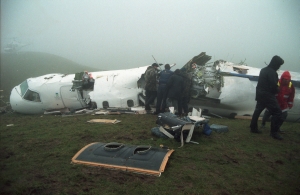
Ansett New Zealand Flight 703 was an Ansett New Zealand scheduled flight from Auckland to Palmerston North. On 9 June 1995, the de Havilland Canada Dash 8-100 aircraft crashed into the Tararua Range on approach to Palmerston North. The flight attendant and three passengers died as a result of the crash; the two pilots and 15 passengers survived.
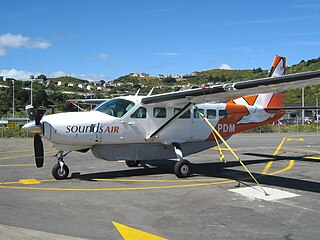
Sounds Air is a New Zealand airline based at Picton. The airline was founded in 1986 by Cliff and Diane Marchant to provide low cost flights to the Marlborough Sounds. The airline has a maintenance facility at Omaka aerodrome with its Sounds Aero Maintenance division based there.
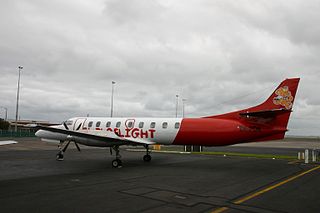
Airwork Flight 23 was a New Zealand Post cargo flight between Auckland International Airport (AKL/NZAA) and Woodbourne Airport (BHE/NZWB) that disintegrated on 3 May 2005.

The history of ballooning, both with hot air and gas, spans many centuries. It includes many firsts, including the first human flight, first flight across the English Channel, first flight in North America, and first aircraft related disaster.

XL Airways Germany Flight 888T (GXL888T) was an acceptance flight for an Airbus A320 on 27 November 2008. The aircraft crashed into the Mediterranean Sea, 7 km off Canet-en-Roussillon on the French coast, close to the Spanish border, killing all seven people on board.

The 1993 Auckland mid-air collision was an aircraft accident in New Zealand. It occurred on 26 November 1993, when two aircraft operated by Airwork, under contract to the New Zealand Police, collided and crashed in central Auckland. The mid-air collision of the Aérospatiale TwinStar helicopter and Piper Archer aeroplane resulted in the deaths of all four occupants – a civilian Airwork pilot on each aircraft and two New Zealand Police officers on the helicopter. The accident occurred in daylight with excellent visibility, in uncontrolled airspace, with both aircraft flying under visual flight rules. Both the helicopter and aeroplane were operated by Airwork (NZ), and working under contract to the New Zealand Police at the time of the accident.

On 4 September 2010, a modified Fletcher FU-24 aeroplane on a parachuting flight from Fox Glacier Aerodrome, New Zealand, crashed shortly after take-off, killing all nine people on board.
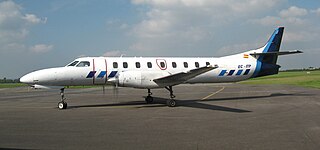
Manx2 Flight 7100 was a scheduled commercial flight from Belfast, Northern Ireland, to Cork, Republic of Ireland. On 10 February 2011, the Fairchild Metro III aircraft flying the route with ten passengers and two crew on board crashed on its third attempt to land at Cork Airport in foggy conditions. Six people, including both pilots, died. Six passengers survived but were injured, four of them seriously.

On 13 August 1989, two hot air balloons collided near Alice Springs, Northern Territory, Australia, causing one to crash to the ground, killing thirteen people. It was the world's deadliest ever ballooning disaster until February 2013, when a balloon accident near Luxor, Egypt killed 19 people. As of July 2016, it remains the deadliest ever ballooning accident in Australia, and the third-deadliest worldwide, surpassed only by the Egypt crash and a balloon accident in Texas in 2016 that claimed the lives of 16 people.
On 23 August 2012, a hot air balloon on a commercial sightseeing flight crashed in stormy weather on the Ljubljana Marsh in central Slovenia, killing 6 of the 32 people on board.

On 26 February 2013, a hot air balloon crashed near Luxor, Egypt, killing 19 out of the 21 people on board. A fire developed in the basket due to a leak in the balloon's gas fuel system, causing the balloon to deflate mid-air and crash to the ground.

TransAsia Airways Flight 235 was a TransAsia Airways domestic flight from Taipei to Kinmen (Quemoy). On 4 February 2015, the aircraft serving the flight, a 10-month-old ATR 72-600, crashed into the Keelung River shortly after takeoff from Taipei Songshan Airport, 5.4 km to the east of Songshan in Taiwan. The aircraft had 53 passengers and five crew on board; 15 of them survived.

On 21 November 2015, a Eurocopter AS350 Astar helicopter, operated by Alpine Adventures on a sightseeing flight, crashed on Fox Glacier in the South Island of New Zealand. All seven people on board died.
On July 30, 2016, sixteen people were killed when the hot air balloon they were riding in struck power lines, crashed and caught fire in the unincorporated community of Maxwell, near Lockhart, Texas, 30 miles (50 km) south of the state capital Austin. It is the deadliest ballooning disaster to ever occur in the United States.
